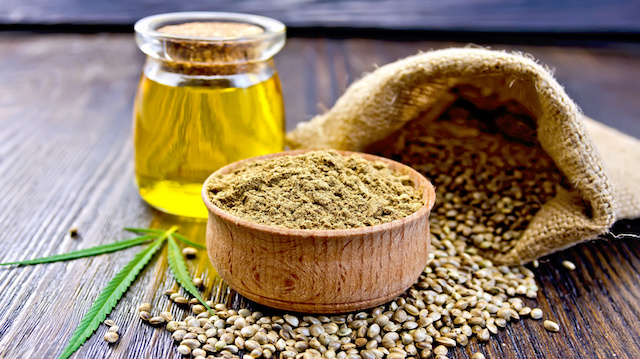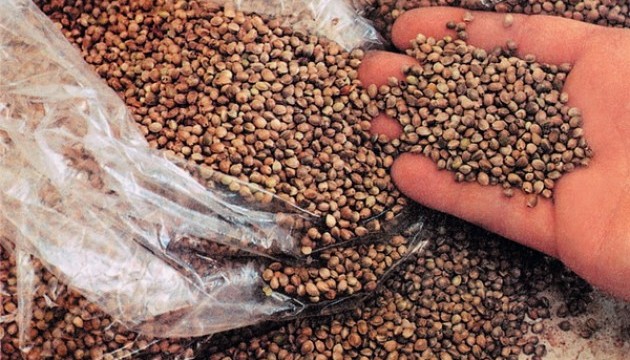
Cannabis sativa, C. indica, C. ruderalis -- it’s possible that you’ve already heard these terms used to describe different species of cannabis. Sativa plants are known for their skinny leaflets, tall stature, long flowering times, and a stimulating, cerebral high. Indicas are thought to be short, bushy plants with wide leaflets, used for hashish production and possessing a powerful, sedating body high. Ruderalis is the feral, ancestral relative with its low THC content and auto-flowering characteristics. Recently, though, new research and technological advances have led to a greater understanding of the cannabis plant, which in turn has led to a new approach to the taxonomic classification of the cannabis family.
First, let's look at the etymology of the currently accepted taxonomy. Cannabis is an adaptation of an ancient word for the hemp plant and is the longstanding name of the genus that includes all hemp and drug varieties of the plant. Sativa is a Latin adjective meaning “cultivated,” indica is Latin for “of India,” and ruderalis is based on the Latin rūdera, the plural of a word meaning “rubble, lump, or rough piece of bronze.” Ruderal plant varieties are those that pop up first in an area that has been cleared of other vegetation or barriers to propagation (growing “out of the rubble,” if you will).
At first glance, these seem like fairly accurate descriptions for three distinct species. What we consider to be sativa has long been cultivated by humans for its seed, fiber, and flowers.Cannabis indica may well have developed on the Indian subcontinent, and ruderalis is a feral, weedy plant that thrives in harsh conditions. However, new discoveries and DNA analyses have provided a much more likely picture of how these species developed and how they are related.
To date, the history of the cannabis plant is still a bit of a mystery. The evidence suggests that it originated in Central Asia. Sometime near the end of the Pleistocene epoch, it migrated to small geographic pockets in Western and Southern Asia, as well as what is now the Balkans and Caucasus Mountains. This represents the first major geographical split in the cannabis population, and is thought to be the main factor in producing two distinctly different species: plants bred and grown for oil seed and hemp fiber (Eastern Europe/Western Asia), and those selected for their psychoactive properties (South and East Asia). Geographical barriers like the Himalayan Mountains kept these two populations ostensibly separate for centuries, thus allowing natural and artificial selection to create two very different types of cannabis.
It's important to note that human selection is the most influential factor in the rise of these two different species. Ancient cultures in Eastern and Southern Asia had many available plants that provided fiber and food, so they selected cannabis plants for their psychoactive properties, probably as a spiritual aid. Conversely, Western/Northern cultures had fewer available sources of sustenance and cordage, so they selected cannabis plants for those properties.
Cannabis researchers are now starting to coalesce around a system of taxonomy proposed by Robert C. Clarke and Mark D. Merlin in their exhaustively researched book Cannabis: Evolution and Ethnobotany. Using historical and recent publications as a launch pad, Clarke and Merlin produced the most thorough examination of the cannabis plant to date, using archaeological findings, historical accounts, and DNA sequencing along with their own personal findings and observations to present a very compelling explanation for their proposed taxonomy.
The previously mentioned split between western hemp fiber cannabis and eastern drug cannabis proves to be the linchpin of this “rope vs. dope” system. Cannabis ruderalis is considered to be either the ancestor of both of these types, or, more likely, a hybrid of this ancestor and some newer, “escaped” cultivars. In their system, Cannabis sativa encompasses all narrow-leafleted, low THC plants cultivated for hemp fiber and seeds, grown all across Europe and in North America and parts of South America as well. Cannabis indica refers to all varieties cultivated for their drug content, whether it's the broad-leafleted plants we associate with Afghanistan and the Hindu Kush Mountains or the narrow-leafleted varieties cultivated in India, Southeast Asia, South America, Mexico, and Jamaica.
Decades of research by dedicated ethnobotanists and various methods of DNA analyses have helped to create what is probably the most accurate taxonomic structure to date. It may lead to a future change in vernacular used in the cannabis industry, but, for now, we’ll continue to refer to our bushy, broad-leafleted, sedating varieties as indicas, and our tall, narrow-leafleted, stimulating varieties as sativas. Using the new taxonomical nomenclature would surely present much confusion for retailers and consumers, so it’s unlikely that the current meanings will be abandoned any time soon.
References: Cannabis: Evolution and Ethnobotany by Robert C. Clarke and Mark D. Merlin, copyright 2013, University of California Press











 There are a few major brands of hemp oil on the market, most of which are a high quality, but you’ll still want to be careful. Avoid flavored hemp oils if you happen to come across any, and also those that contain preservatives or additives. You’ll want to look for raw, cold-pressed hemp seed oil that’s organic and non-GMO. You can find these online or at health-food stores. An eight-ounce bottle of hemp oil will last around one to two months, depending on how much you use it each day.
There are a few major brands of hemp oil on the market, most of which are a high quality, but you’ll still want to be careful. Avoid flavored hemp oils if you happen to come across any, and also those that contain preservatives or additives. You’ll want to look for raw, cold-pressed hemp seed oil that’s organic and non-GMO. You can find these online or at health-food stores. An eight-ounce bottle of hemp oil will last around one to two months, depending on how much you use it each day.
